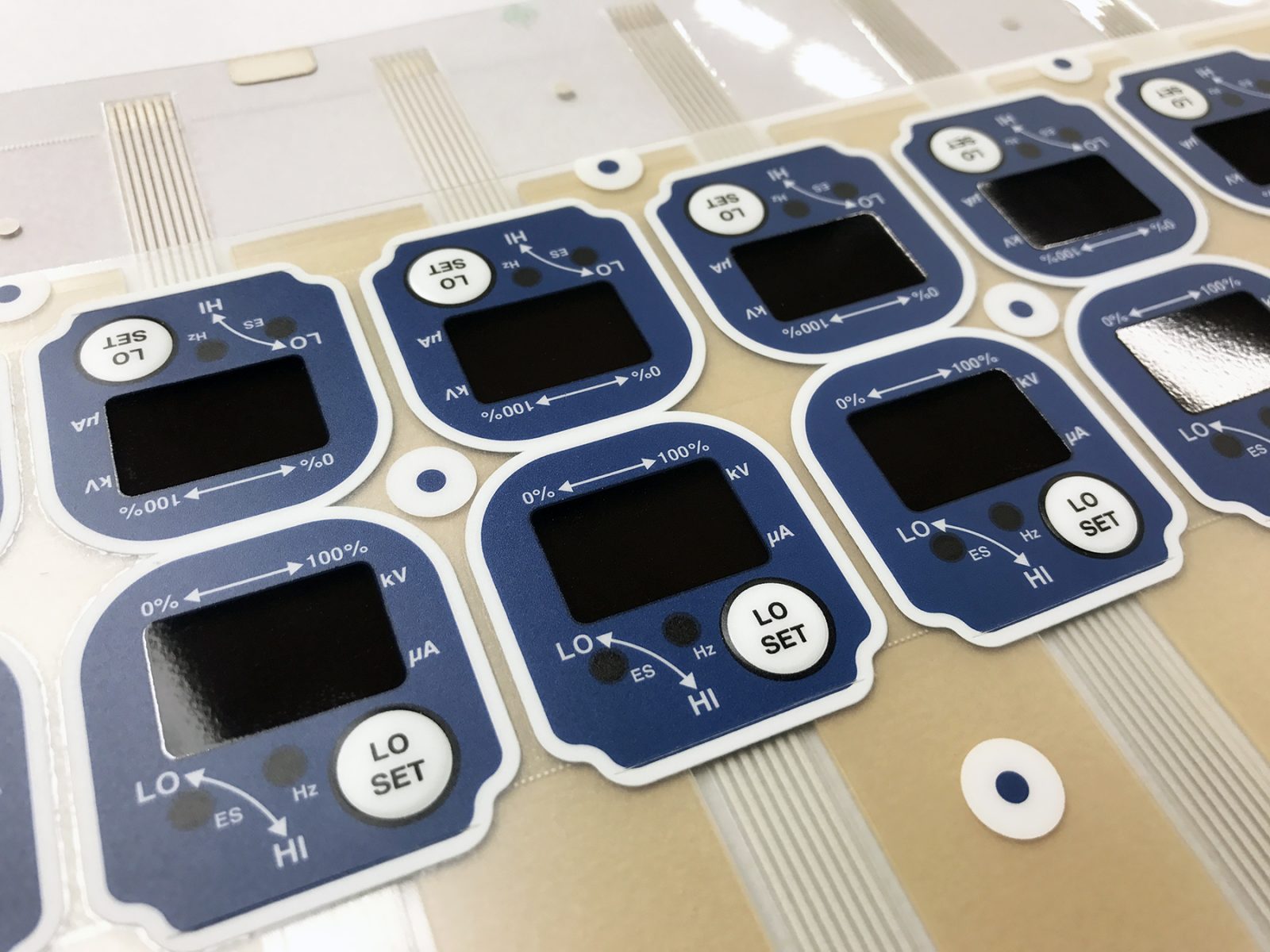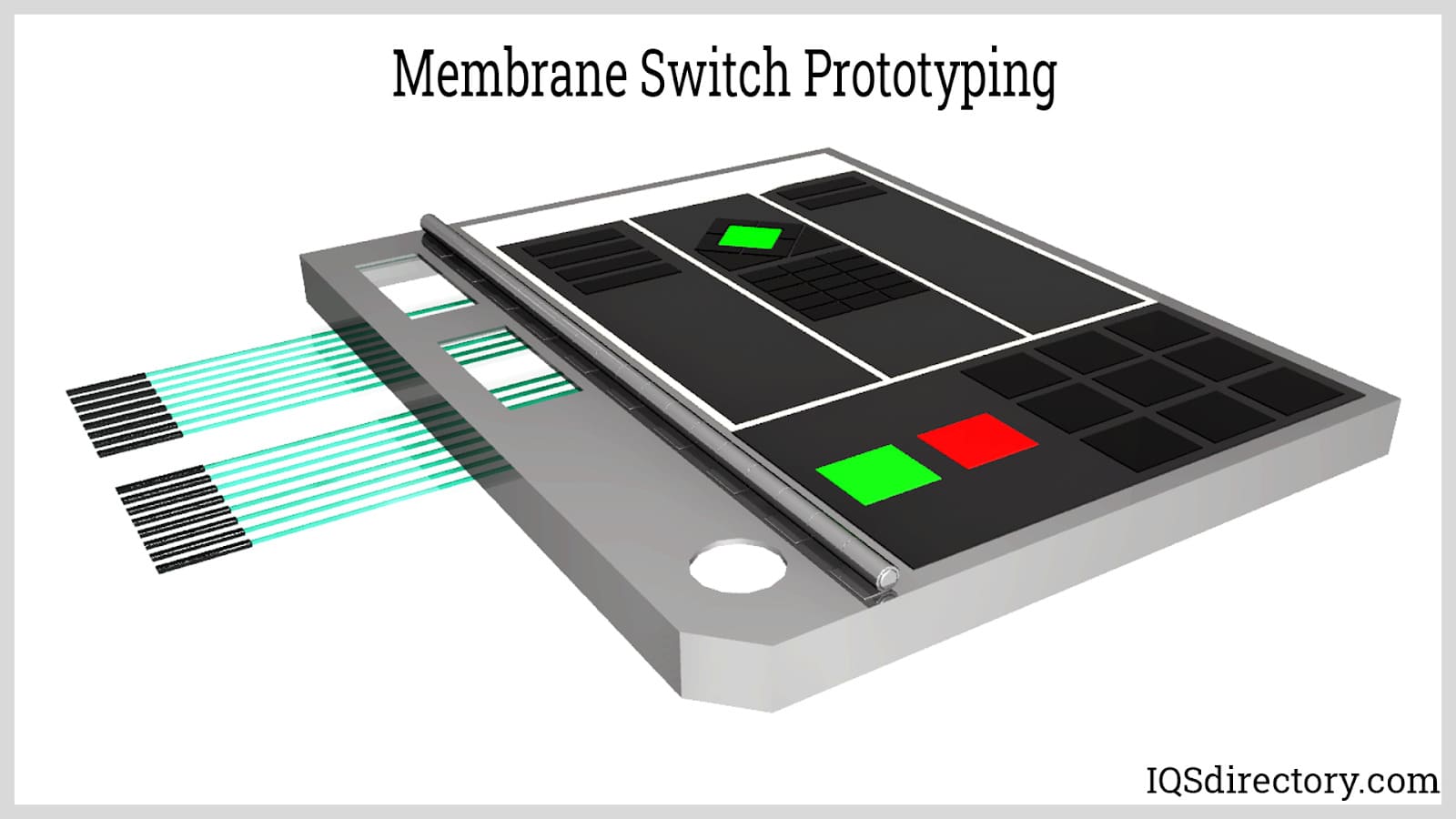How Membrane Switches Are Used in Medical Devices and Equipment
How Membrane Switches Are Used in Medical Devices and Equipment
Blog Article
Understanding the Importance of Membrane Switches in Interface
Membrane buttons are important components in the layout of efficient interface, facilitating not just performance yet likewise enhancing visual appeal and individual interaction. Their special features, such as resistance to ecological aspects and customizable styles, make them ideal for a diverse selection of applications across numerous industries. As we check out the numerous advantages and future patterns associated with Membrane innovation, it becomes clear that these switches are much more than simply elements; they stand for a merging of innovation and functionality. The effects of this innovation on individual experience deserve analyzing better.
What Are Membrane Switches?

The spacer layer, which consists of sticky buildings, permits the separation of the circuit layer from the overlay, guaranteeing that the switch continues to be in a non-activated state till pressed. When pressure is related to the overlay, it presses the spacer layer, connecting the space and finishing the circuit in the underlying layer. This layout not just decreases the physical area required for typical mechanical buttons yet likewise boosts the toughness of the gadget, as Membrane buttons are typically resistant to dust, dampness, and various other environmental variables.
Commonly found in applications ranging from consumer electronics to clinical gadgets, Membrane buttons are important to modern-day innovation, giving a straightforward and effective interface that aligns with contemporary layout requirements.
Benefits of Membrane Switches
While countless switch modern technologies exist, Membrane Switches offer distinctive advantages that make them specifically desirable in different applications. Among the main benefits of Membrane buttons is their small layout, which permits space-saving applications in devices where property is restricted. Their thin account not only improves visual appeal however additionally facilitates light-weight building and construction.
Another considerable advantage is their resistance to ecological factors. Membrane switches are commonly sealed against wetness, dirt, and contaminants, making them optimal for usage popular settings, such as clinical devices and industrial tools. This durability prolongs the life-span of the switch, lowering maintenance costs and improving dependability.
In addition, Membrane buttons can be customized to fulfill particular layout needs, incorporating unique graphics and colors that improve individual interaction. Their tactile responses alternatives can additionally be customized to provide a rewarding user experience. Additionally, Membrane buttons are cost-efficient, specifically in high-volume applications, as they can be created effectively.
Applications in Various Industries

In the consumer electronic devices industry, Membrane buttons prevail in tools such as microwaves, cleaning equipments, and push-button controls. Their tactile responses and aesthetic options boost customer experience while offering a sleek, modern-day appearance. Furthermore, automotive suppliers use Membrane switches in dashboard controls and infomercial systems, where area is limited, and customer interaction is vital.
Furthermore, the industrial field leverages Membrane buttons in control panels for machinery and tools, allowing for instinctive operation in usually severe settings. Their resistance to chemicals and wetness makes certain durability and reliability in these applications. On the whole, the adaptability of Membrane Switches adds substantially to their prevalent use, making them crucial in various technical domain names.
Design Considerations for Membrane Switches

When designing Membrane switches, a number of crucial factors to consider must be taken into account to make sure ideal capability and customer experience. To start with, the option of products is crucial; choosing long lasting, high-grade substratums can boost the switch's longevity and resistance to environmental factors such as moisture and temperature level variations.
Second of all, the layout of the visuals overlay must focus on clearness and ease of use. Symbols and message need to be readable, and the design ought to facilitate intuitive communication (membrane switches). In addition, responsive comments is important; incorporating a responsive dome or various other systems can enhance the customer experience by supplying physical confirmation of activation
Another vital aspect is the switch's electrical efficiency. Designers must make certain that the conductive traces are appropriately developed to minimize resistance and stay clear of signal interference. This involves analyzing the needed actuation pressure additional hints and making certain compatibility with the digital components they will certainly interface with.

Future Patterns in Membrane Modern Technology
As innovation proceeds to development, Membrane buttons are positioned to develop significantly, driven by advancements in materials and producing strategies. One emerging fad is the incorporation of sophisticated products, such as flexible substrates and conductive inks, which enhance longevity and minimize the overall weight of Membrane switches. These materials not just boost the tactile feedback however likewise enable for the layout of buttons that can stand up to harsher ecological conditions.
Additionally, the integration of touch-sensitive technologies is changing traditional Membrane Switches right into even more interactive user interfaces. Capacitive touch sensors installed within Membrane button panels can provide a much more instinctive and responsive best site user experience, lining up with the growing need for smooth, modern-day layouts in customer electronics.
Additionally, developments in printing methods, such as electronic and 3D printing, make it possible for quick prototyping and modification of Membrane buttons. This adaptability permits suppliers to react more quickly to market demands and consumer choices.
Finally, sustainability is coming to be a significant emphasis, with suppliers discovering eco-friendly materials and procedures. As these fads unravel, the future of Membrane innovation promises enhanced functionality, visual allure, and ecological duty, strengthening their function in advanced user interfaces throughout numerous read the article markets.
Final Thought
In conclusion, Membrane Switches represent an essential element in the layout of individual interfaces, incorporating functionality with visual adaptability. As developments in modern technology continue, the advancement of Membrane switches is anticipated to further fine-tune customer interfaces, driving development and boosting usability in a progressively intricate technological landscape.
Membrane buttons are important components in the style of reliable user interfaces, assisting in not just functionality however additionally boosting aesthetic charm and user interaction.Membrane Switches offer as a crucial element in various customer interfaces, assisting in a seamless interaction in between customers and electronic gadgets.While countless button innovations exist, Membrane Switches deal distinct advantages that make them particularly desirable in different applications.In addition, Membrane buttons can be customized to meet particular style demands, integrating special graphics and shades that enhance individual interaction.In final thought, Membrane Switches represent an important element in the style of individual interfaces, integrating performance with aesthetic versatility.
Report this page